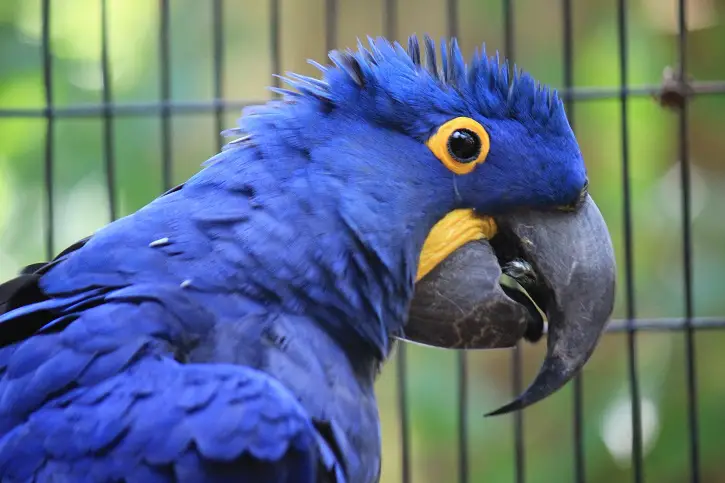General Information
If a female parrot is not able to find a mate or a nesting spot, it will not lay eggs in the wild. However, in captivity, some parrots can lay eggs, or have multiple clutches of eggs, even if they don’t have a mate.
It depletes their nutritional resources and puts them at risk for malnutrition, osteoporosis, and other life-threatening diseases. Tropical Birds These risks are part of intentional breeding.However, chicks may be born.
Some birds experience problems the first time
they attempt to lay eggs. Others birds may be able to lay eggs for many years without having any problems. However, in either case, reproductive problems could lead to egg-binding or oviductal prolapse, death, or both.
Spaying a bird is not as easy as it is with dogs and cats.Sometimes, medical intervention may be necessary for some birds.
Get your bird to sleep early at 5 or 6 p.m
Long days are a key environmental cue for birds that encourage egg laying. If you allow your bird to stay up until late, it will be mimicking the long days in spring/summer and making your bird believe that it is time for breeding. To turn off her breeding hormones, you can give your bird a bedtime before she goes to sleep. This will not work if she is in the dark or with the TV on. ).

Avoid dark and enclosed areas with your bird
Parrots tend to be cavity nesters. This means they prefer dark, enclosed places where they can lay their eggs.It is important to immediately remove nest boxes. Birds are often clever and can find a nesting spot under a couch, behind a microwave, or even in the dryer.
Keep your bird from other birds with whom she is bonded. A mate can be a strong stimulant for your bird’s desire to lay eggs. The mate could be another bird of the same species, a male bird or a member of an opposing sex group.
Avoid breeding behavior with your bird
If your bird displays these behaviors, you can put her back in her cage and give her a “time-out”. Do not pet your bird on its back or under her tail as this can stimulate her sexually.
Remove your bird’s “love toys”. Single birds may display mating behavior with objects in their environment such as perches, food cups, mirrors, and toys. Mating behaviors include tail lifting, vent rubbing, regurgitating food, and vent rubbing..
Change the location and interior of the cag
You can discourage your bird from laying eggs by moving it to a new cage or changing its location. It can be helpful to change the type of toys, dishes, or perches within the cage.
Provide optimal nutrition for your bird and full-spectrum light. Laying eggs can cause your bird to lose the vitamins, minerals, and calcium that she needs to be healthy. It is crucial that your bird has a balanced and complete diet during the breeding season. Most birds will eat a pelleted diet. More
Supplementing with vitamins with a seed diet is not enough. Your veterinarian will recommend pelleted food for your bird. For your bird to be able to use calcium, full-spectrum sunlight must be available. This can either come from unfiltered sunlight or a full-spectrum fluorescent bulb.
Do not remove eggs that your bird has laid
Occasionally, allowing your bird to rest on her eggs is the best way to stop the egg-laying cycle. If your bird starts to lay a few eggs, then she sits down on the eggs for 21 days until she loses interest. This strategy might not work if your bird continues to lay eggs after she has laid 3-4 eggs.
Talk to your veterinarian about hormone injections.Bird Flying Your veterinarian may recommend hormone injections for excessive egg-laying cases. Hormone injections can reduce the number of eggs laid in some birds and are generally safe.
Ask your veterinarian if you have any questions. We are available to help you if your bird is still laying. We have assisted hundreds of bird owners to stop their birds from getting pregnant.

